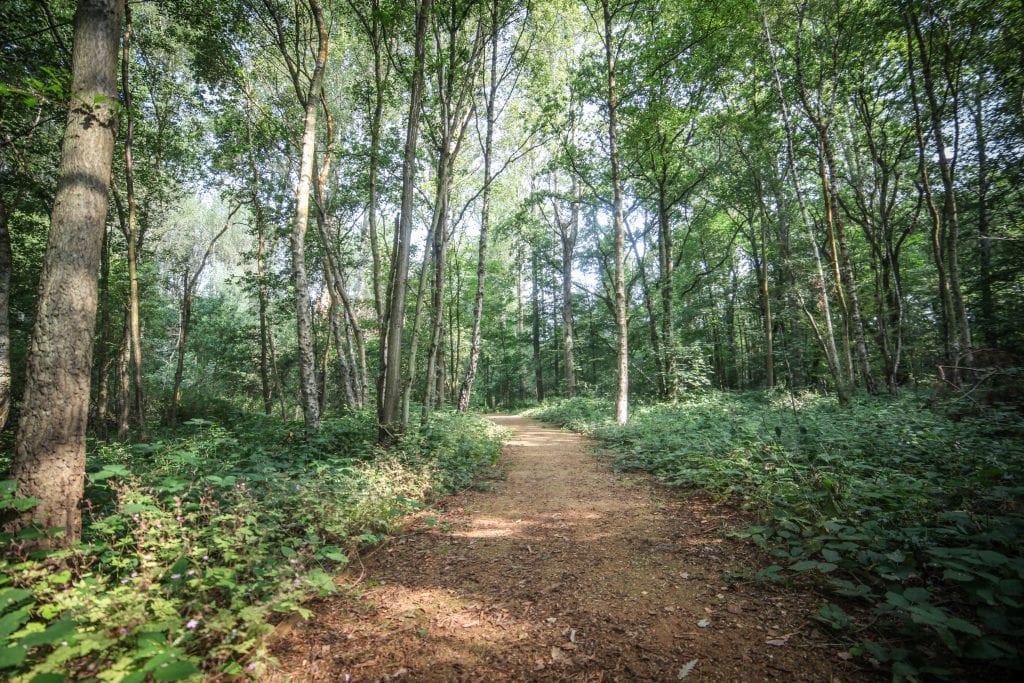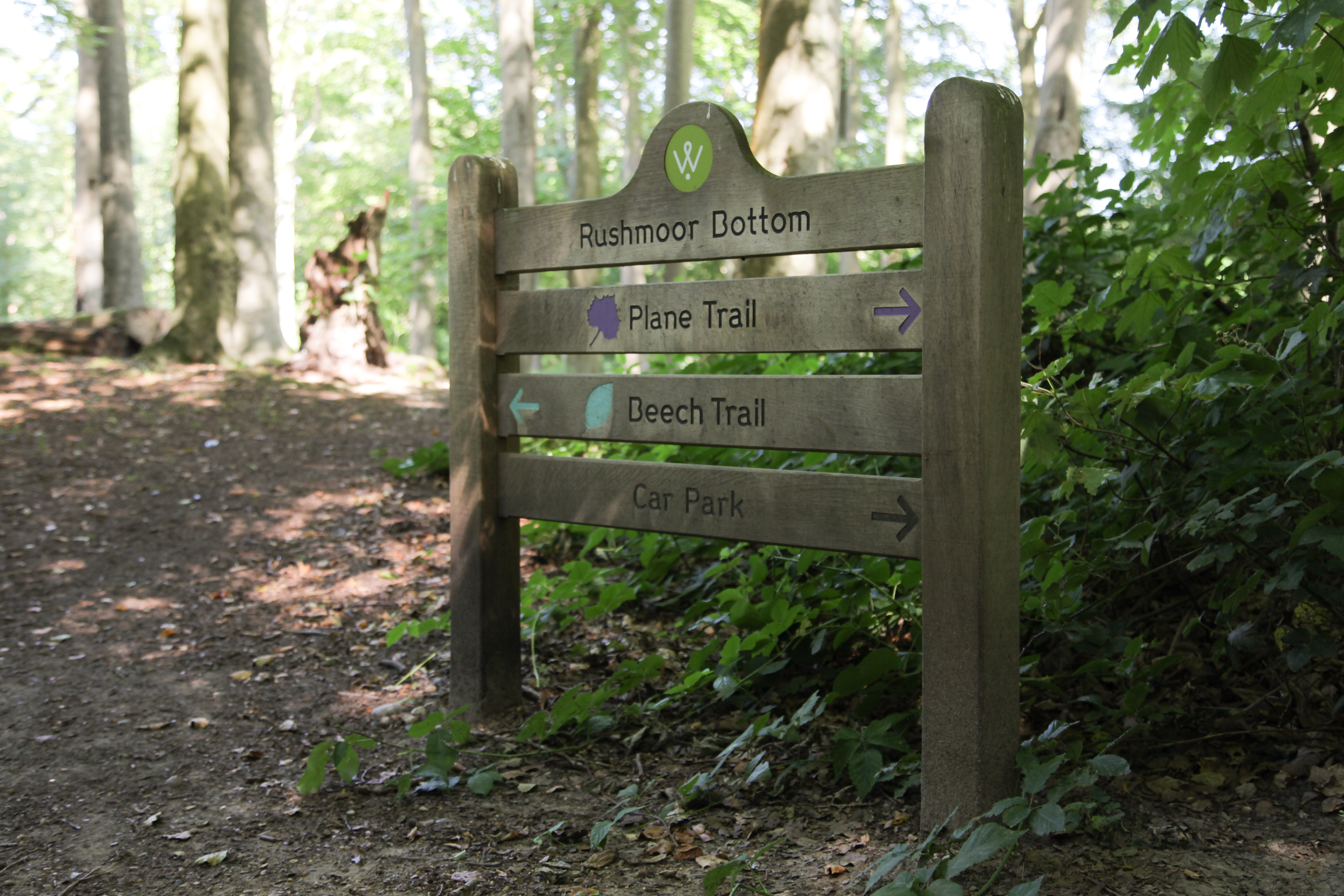11th August 2020
In the first of two blogs we sat down with Land Trust Development Officer Joe Heath to discuss all things SANG. Joe is the Trust’s resident expert on SANG, and was heavily involved with the Trust’s work at Wellesley Woodlands, the biggest area of SANG in the country.
First things first Joe, what exactly is a SANG?
A Suitable Alternative Natural Greenspace (SANG) is a recreational site, created to attract residents of new developments away from designated sites that are protected for their valuable ecology and are sensitive to recreational activities such as dog walking.
The protected sites are Special Protection Areas (SPAs) and Special Areas of Conservation (SACs). SPAs are designated to protect wild birds and their habitats, while SACs are designated to protect habitats and non-bird species.
These sites are designated under the Conservation of Wild Birds and the Conservation of Natural Habitats and of Wild Fauna and Flora. The requirements of both Directives are transposed into domestic UK law through the Conservation of Habitats and Species Regulations 2010 and therefore local authorities must ensure that any proposed residential development will not adversely affect the integrity of these sites.
SANGs were evolved to protect the Thames-Basin Heaths SPA around 10 years ago and now the concept is spreading to protect more sites across the country including Mersey SPA, Exe Estuary SPA and the Epping Forest SAC to name a few.
So what do they look like?
Natural England established guidelines and criteria for SANGs that are available online and widely adopted across the Country. These guidelines ensure that each site is suitably designed for recreation and is attractive enough to encourage visitors to make repeat visits rather than visiting the protected sites.
SANGs can be created on existing informal open spaces, ex-agricultural land, woodlands and restored landfill sites. I’ve seen SANGs from 3.5 hectares to over 100 hectares, so there’s a huge amount of variety.
Most SANGs that I’ve seen are created on former agricultural land and mainly consist of meadow grasslands with new planting, a mown circular footpath, timber furniture and a car park, such as Eashing Fields.
What is SANG capacity?
The size of a SANG will depend on two factors: the minimum area within which a sensible circular footpath of at least 2.3km can be achieved, and/or, the total ‘capacity’ required within the SANG.
The capacity of a SANG is how many dwellings it can allocate. SANGs are generally provided at a ratio of 8 hectares per 1,000 new residents. Therefore 1 hectare can allocate 125 residents; an average of 2.4 persons per dwelling is widely assumed for new developments, and so 1 hectare can allocate 52 dwellings.
What are the essentials of a good SANG?
Based on capacity alone, a 300-unit development would require 5.77 hectares of SANG, BUT you can’t fit a sensible 2.3km circular footpath on a site this small, although some try.
Therefore, bigger is better. One of my main frustrations is when I see a design that has tried to squeeze a 2.3km footpath within a site less than 10 hectares. It’s even a push on a 12 hectare SANG. I didn’t know what the word ‘convoluted’ meant until I started reviewing SANG designs.
I appreciate there are often restrictions on the area of land available for SANG, but perhaps if landowners knew the potential value of surplus capacity, they may be more willing to provide greater area of land for future SANGs.
The most common SANGs are former agricultural sites and whilst these have great biodiversity impacts for the local area, the grassland and planting is completely new and so the sites come with their own teething problems and ultimately will take a number of years before they look impressive.
Land with a mature flora has the instant aesthetic impact and in my opinion make better SANGs. Personally, I believe mature woodland sites offer the best landscape as they change with the seasons and provide more exciting experiences. Although I must admit that I’m biased as I worked on Wellesley Woodlands as my graduate project so I’ll always prefer woodland SANGs.

I think it’s important for SANGs to have their own unique features and this is noted on the Natural England guidelines.
It’s great if these can be existing natural features such as rivers, hills or picturesque views. However, it’s often not possible to cherry-pick land for SANGs and so developers seek ways to increase the interest. For example, at our newest SANG, Hogmoor Inclosure we will have a natural play area and café; at Wellesley Woodlands we have a brass rubbing trail for children; at Ash Green Meadows we’re intending to let a field re-wild to enhance the biodiversity and visitor experience; at Weyburn Meadows we have a boardwalk that runs along the River Wey and at Eashing Fields we have an orchard for scrumping.
Our future pipeline sites include exciting features such as surfaced circular paths for the physically less-able, ancient woodland, small-scale land sculpting, sea views and historical pill boxes and outdoor classrooms.
What are some of the common mistakes or issues with SANG?
Local authorities and Case Officers within Natural England, all seem to have different views on SANGs. This isn’t a complaint or a criticism, but it does mean that there is little consistency across SANGs which makes designing and managing complicated.
Designs should be kept simple. Keep infrastructure to a minimum and replace new planting with rewilding areas to save cost.
Management plans should be equally simple. Don’t include complex grass cutting regimes or the requirement to consult ecologists before undertaking any management activity.
The Land Trust has experienced a few issues with the capital works undertaken prior to acquisition – the most common are long delays whilst clients focus on other matters, and so to tackle this we are now seeking to undertake capital works on our future SANGs. This removes the nuisance for the client and gives both parties comfort that the works will be undertaken on time and to a high standard.
In some cases, developers don’t know that they can transfer SANGs to organisations other than the local authority, such as to the Land Trust. We have a good reputation in Surrey, Hampshire and Berkshire due to our existing portfolio of SANGs in the area, but in counties such as Hertfordshire and Worcestershire, where we do not have an existing presence, developers are not aware of the Land Trust or that we can acquire SANGs.
Furthermore, in most cases, clients do not know that their SANG has capacity surplus to their needs and that this capacity can have a considerable commercial value.
Thanks Joe. In our next article Joe will be explaining a bit more about strategic SANG and the Land Trust’s role in managing these, now and in the future.

If you have any questions or queries about what we do or how to go about working with us we'd love to hear from.
Contact usWe are always on the look out for enthusiastic, committed people who want to make a real and lasting difference in their local community.
Get Involved